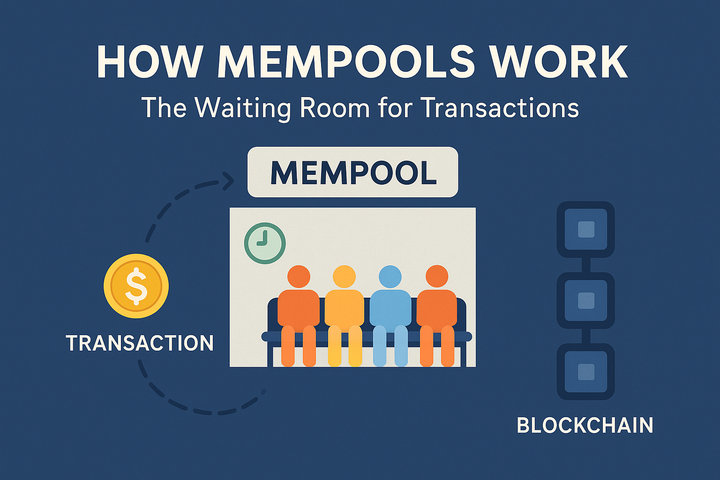The Future of Cross-Chain with Bitcoin: How Mitosis and Babylon Are Building a New Standard of Trust

Integrating Bitcoin into the multi-chain space is the holy grail of crypto infrastructure. BTC remains the most valuable digital asset, but its decentralized use across other networks is still blocked by legacy solutions like centralized bridges, wrapped tokens, and federated custodians. That's starting to change today, as Mitosis and Babylon enter the picture, laying the groundwork for a truly decentralized BTC cross-chain system.

BTC's Key Limitation: Lack of Trustless Interoperability
Bitcoin is a network without a full virtual machine, and without a native way to respond to external states. This means it can't directly verify what happened on another network, like Ethereum or Solana. All current "integration" works according to the model: lock BTC → trust the custodian → get a wrapped version. It is convenient, but centralized and vulnerable.
We need a trustless bridge - a system in which:
• No one can steal the pledged BTC;
• All actions can be verified without the participation of intermediaries;
• Attackers suffer economic losses;
• Finality is based on the security of Bitcoin.
These problems are solved by Mitosis and Babylon - in tandem.
Babylon: consensus and security from Bitcoin
Babylon is building a security module in which any network can use Bitcoin as a source of finality and a mechanism of economic punishment. The main principles are:
1. Validator slashing in BTC: validators involved in ensuring security put collateral in Bitcoin. If they violate the rules, they lose their BTC. Without the need to have smart contracts in Bitcoin itself.
2. Finality anchoring: every important state of the network is anchored to the Bitcoin chain using Merkle trees and OP_RETURN opcodes.
3. Chain-neutral layer: Babylon does not execute smart contracts, but serves as an independent consensus layer that can be "attached" to any modular architecture.

Mitosis: infrastructure for moving assets and messages
Mitosis is a universal zk messenger and cross-chain execution layer that provides:
• Zero-knowledge message passing - transfer data between any networks without trust, only through zk-proofs.
• Omnichain liquidity routing - move assets through zk-channels and liquid pools, without wrapped tokens.
• Execution layer for custom logic - support for zkVM, in which you can run arbitrary applications, including DeFi, DAOs, games and NFTs.

BTC Cross-Chain Without Bridges: How It Works
BTC Collateral
The validators responsible for the cross-chain flow deposit BTC collateral in Babylon.
Action on another network
The user locks BTC in a special zk contract. This event is processed and verified in Mitosis.
ZK proof + finality
This proof is validated on the target network (e.g. Ethereum L2), and its finality is fixed in Bitcoin via Babylon.
Mint native BTC derivative on L2
The user receives a BTC derivative that is not based on the wrapped model, but on cryptographic verification.
If validators violate
Their Bitcoin collateral is destroyed. This incentivizes honest work without trust.

Mitosis x Babylon — Deep Technical Matrix for Trustless Bitcoin Cross-Chain Interoperability
|
Category |
Mitosis |
Babylon |
Synergy Outcome |
|
Purpose |
Cross-chain
execution & ZK message transport |
Bitcoin-based
security & finality layer |
End-to-end
BTC interoperability without trust assumptions |
|
Security
Base |
ZK-proofs
verified on-chain, enforced by zkVM |
Bitcoin
anchoring, BTC-slashable validators |
Cryptographic
+ economic security enforced by Bitcoin |
|
Consensus
Role |
Stateless
execution environment across chains |
Provides
trustless checkpoint finality using Bitcoin |
Off-chain
actions can be finalized trustlessly on Bitcoin |
|
BTC
Custody Model |
BTC
locked in ZK-controlled contracts |
Validators
stake BTC for accountability |
Native
BTC is never wrapped or custodied centrally |
|
Smart
Contract Support |
Custom
zkVM runs on rollups or L2s |
No
contract logic, consensus/finality only |
Secure
app layer (Mitosis) anchored to Bitcoin (Babylon) |
|
Slashing
Mechanism |
Not
native to Mitosis itself |
BTC
slashed if validators misbehave |
Malicious
actors punished in BTC — strongest deterrent |
|
Execution
Environment |
ZK-native
with modular zkVM logic |
Stateless,
anchor-only protocol |
zk
Execution + BTC Security = Full-stack deployment platform |
|
Cross-chain
Communication |
ZK-verified
omni-chain messages |
Validates
and timestamps consensus states |
Fully
auditable and verifiable message pathways |
|
BTC
Minting Process |
BTC
locked → ZK proof → BTC derivative minted on destination chain |
Finality
checkpoint written to Bitcoin |
Token
minting & burning governed by ZK logic + BTC state anchoring |
|
Wrapped
Token Dependency |
None —
no WBTC or custodians |
None —
Bitcoin-native slashing instead |
Zero
reliance on wrapped assets or custodial bridges |
|
Validator
Incentives |
Participate
in message routing and proof validation |
Earn
yield for securing checkpoints and acting honestly |
Coordinated
incentives backed by real BTC at stake |
|
Finality
Guarantees |
ZK
proofs verify origin-side state |
Anchored
checkpoint proves finality on Bitcoin |
Proof-of-publication
+ proof-of-correctness = |
|
BTC-level
security |
|||
|
Risk
Model |
Misbehavior
punished by rejection of ZK proof |
Misbehavior
punished by BTC slashing |
Combined
cryptoeconomic and cryptographic accountability |
|
Mainnet
Compatibility |
Deployable
on L2s, rollups, modular stacks |
Bitcoin-native
(doesn’t require smart contracts) |
Easy
integration with Celestia, EigenLayer, Avail, etc. |
|
Latency |
Fast ZK
proof generation (~seconds) |
Anchoring
to Bitcoin every ~10 min (block time) |
Fast
execution, slow but secure settlement |
|
Use
Cases |
BTC
DeFi, omni-chain liquidity, secure swaps, DAOs |
Finality-as-a-service
for rollups, BTC-secured consensus |
Enables
BTC-native stablecoins, lending, NFTs, yield protocols |
|
Decentralization
Level |
Fully
permissionless, no gatekeepers |
Anyone
can validate and stake BTC |
System-wide
decentralization — no single point of failure |
|
Trust
Assumptions |
Trust
in ZK proofs only (math-based) |
Trust
in Bitcoin’s finality and validator slashing |
No
custodians, multisig, or bridge operators needed |
|
Regulatory
Posture |
Self-custodial,
cryptographic control |
Pure
BTC-layer enforcement, no intermediaries |
Minimizes
legal risk by eliminating trusted parties |
|
Composability |
Works
with any rollup or modular stack (via zkVM) |
Chain-agnostic,
overlays Bitcoin finality anywhere |
Broadest
composability for developers and infra builders |
|
Innovation
Edge |
zk-native
messaging + liquidity in one layer |
First
protocol to slash BTC for validator behavior |
Together:
first architecture for fully trustless BTC interoperability |
Why it's radically important
🔒 No multisig or custodians
All logic is protected by cryptography and Bitcoin network consensus.
⚖️ Economic incentives are aligned
BTC slashing creates a powerful deterrent for abusers.
🧩 Integrate with any modular ecosystem
Suitable for Celestia, EigenLayer, Caldera, Near DA, Avail, and more.
🚀 Unlocking BTC for DeFi
Unlocks $800B of liquidity for trustless applications: lending, AMM, stablecoins, and NFTs.
Conclusion: This is not a bridge. It's a trust layer for a new era
The combination of Babylon and Mitosis is not just a bridge between Bitcoin and the rest of the crypto world. It's a new architecture model where Bitcoin's security is used as a public good, and Zero Knowledge provides scalability and flexibility.
The focus is not on tokens, but on principles: finality, immutability, and fault tolerance. Everything that was impossible in the multichain world with Bitcoin is now possible.



Comments ()